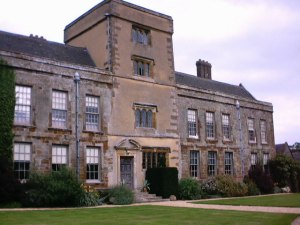Abstract: First founded as an Augustinian Priory in the twelfth century, Canons Ashby was for over 400 years the home of the Dryden family. The history of libraries on the site is complex and many-layered, but one thing is striking: the near invisibility of books in the pre-nineteenth century documentary record. The paper will discuss the reasons which may underlie this, and will explore the pitfalls of relying on inventories when writing the history of domestic libraries.
As the abstract states, Mark Purcell investigates the question: was there a library at Canons Ashby long before it was ever documented in inventories? Through examination of individual books and fragments, Purcell argues that there is clear evidence that books were to be found in Canons Ashby in the early eighteenth century and from circumstantial evidence that there might well have been a library even if it was not necessarily called that at the time. As books became more prevalent it became more difficult for inventories to list all titles individually and sometimes books were ignored for that reason. In other country homes it is known that a separate library catalogue had been produced meaning that it was not necessary for books to be included on a main inventory. Nevertheless, if such a catalogue was written for Canons Ashby it no longer survives.
Canons Ashby House is an Elizabethan manor house located in Canons Ashby village, Daventry in Northamptonshire. It was built on the land of a former priory church (as per its name) and was traditionally the home of the Dryden family; the most famous of whom was the poet, literary critic, translator, and playwright John Dryden (1631-1700). The house, along with its formal garden came to the National Trust in 1981.

